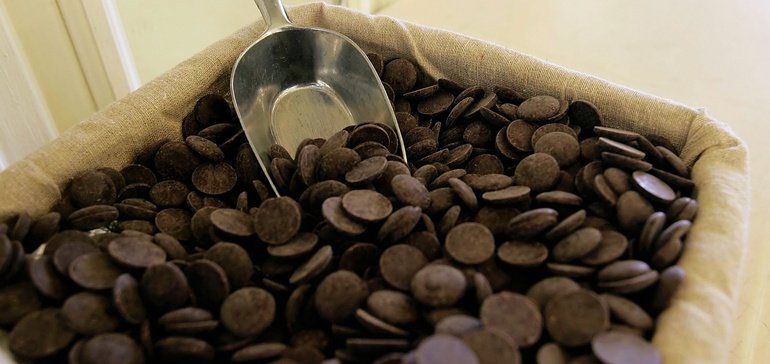A third of consumers ate more chocolate during the pandemic, study says

Dive Brief:
-
Roughly one-third of consumers increased their chocolate consumption as a result of COVID-19, according to Cargill’s new ChocoLogic study. Consumers choose chocolate flavors at least half of the time for bakery, beverages, candy, ice cream, salty snacks and snack/nutrition bars, the study found. Roughly 70% believe chocolate has health benefits, especially dark chocolate, which 52% of consumers choose because they believe it is healthier.
-
Consumers choose chocolate for a variety of reasons. Three in four see it as a reward, 72% say it is a mood booster and 59% agree it increases their energy. More than half turn to chocolate to get them through a difficult day. The results come from a February survey of more than 600 people in the U.S. who are primary grocery shoppers.
-
Chocolate sales grew 4.2% during the pandemic, according to the National Confectioners Association’s 2021 State of Treating report. Chocolate also saw a boost from two pandemic consumer trends: increased interest in functional foods and the tendency to indulge during 2020.
Dive Insight:
Consumers take a variety of factors into consideration when shopping for chocolate, with many opting for premium items. The premium chocolate space has been growing in recent years as manufacturers launch chocolate products with label claims including organic, free trade and paleo, aimed at differentiating their offerings in the crowded candy aisle. Major players including Hershey, Mars and Ferrero, as well as smaller brands including Theo, Chocolove and Dagoba are active in the premium chocolate space.
The most important label claim on these confections is “made with real chocolate,” according to Cargill’s study. When assessing quality and deciding whether to purchase a chocolate, consumers look at cacao content, texture, and provenance claims. Half of shoppers view dark chocolate as a higher-quality choice, while 71% note when chocolate has a coarse or grainy texture. If a chocolate product specifies the origin of its cacao on the label, 25% of shoppers view it as higher quality.
And while new flavor combinations of types of chocolate pique 45% of consumers’ interest, classic combinations like caramel and peanut butter remain consumer favorites, according to Cargill’s report. Other leading flavors for chocolate include salt, mint, fruit and coffee or espresso. Unique flavors like botanical notes, spices and herbs are more popular with younger consumers.
Chocolate makers are taking their products up a notch, adding premium and on-trend features fo their offerings to win over today’s consumer. Functional Chocolate Company is doubling down on the health-focused functional foods trend with its Energy Chocolate and Sleepy Chocolate. The 60% Fair Trade cacao bars are designed to help consumers either wake up or settle down for bedtime. The company also makes chocolate with ingredients to help deal with stress and anxiety, enhance libido and aid in women’s health.
As consumers want treats with less sugar, chocolate makers are also meeting their needs. Hershey recently doubled down on its low- and no-sugar options, launching new products earlier this year. It also debuted organic and bite-sized chocolates to capture the growing better-for-you chocolate segment, which currently makes up only 6% of the market, according to IRI data cited by Hershey. The company also recently purchased premium low-sugar confectionery brand Lily’s, which offers dark and milk chocolate bars, baking chips and peanut butter cups.
For many consumers, chocolate’s health benefits are a leading reason to indulge, with studies showing a decrease in heart disease risk for those who eat it several times a week. Chocolate ingredients leader Barry Callebaut has a pending petition to the U.S. Food and Drug Administration to add a health claim to chocolate labels. Health experts note while chocolate has health benefits, it remains a high-calorie food that should be enjoyed in moderation. But for many consumers, the health benefits help justify more frequent indulgences.
As the pandemic winds down, chocolate will likely remain a staple for many consumers. The chocolate market is expected to surpass $20 billion by 2025, according to research firm Index Box. The pandemic only accelerated the segment’s growth.
Source: fooddive.com

